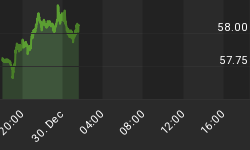"[T]he risk exists that, with aggregate demand exhibiting considerable momentum, output could overshoot its sustainable path, leading ultimately--in the absence of countervailing monetary policy action--to further upward pressure on inflation." Testimony of Chairman Ben S. Bernanke Semiannual Monetary Policy Report to the Congress before the Committee on Financial Services, U.S. House of Representatives February 15, 2006.
"[I]n coming quarters the FOMC will have to make ongoing, provisional judgments about the risks to both inflation and growth, and monetary policy actions will be increasingly dependent on incoming data." Testimony of Chairman Ben S. Bernanke Semiannual Monetary Policy Report to the Congress before the Committee on Financial Services, U.S. House of Representatives February 15, 2006.
"But when pressed about what it would take for the Fed to stop raising interest rates, Poole said: 'We would have to see a string of new data observations that (are) coming in on the low side of expectations and we regarded as indicating that the economy (was) really slowing down and inflation pressure coming off.'" Reuters reporter Alister Bull covering speech and Q&A of St. Louis Fed President William Poole on February 16, 2005 in Little Rock, Arkansas.
These quotes from Fed officials suggest that the Fed puts its policy decisions on one set of monthly/quarterly economic data at a time. It's kind of like driving down a dark road at night with your low-beam headlights on. Although you can see that the road is straight a short distance ahead, you cannot see the curve just beyond unless you put on your high beams.
Yes, the January cycle of economic data has been strong. But everyone knows that one of the warmest Januarys on record contributed significantly to the apparent economic strength. And, barring a complete collapse in February and March, first-quarter real GDP growth will be considerably above 3-1/2% -- my perception of potential real GDP growth. But even if firstquarter real GDP growth comes in at 5% vs. the previous quarter, on a year-over-year basis, it would be 3.4%, which would represent a general declining trend in economic growth. And what about policy lags? If the FOMC raises the fed funds rate to 5.00% by May 10, which is what is priced into the fed funds futures contracts and which is what St. Louis Fed President Poole said he was "comfortable" with, that would represent a cumulative 125 basis points of funds rate increases since the beginning of November. Is the FOMC firing blanks?
Let's take a look at Chart 1 below. Notice two things. Firstly, the Fed's preferred measure of consumer prices, the core Personal Consumption Expenditure chain price index, tends to decelerate in growth after or coincident to the deceleration in growth of real GDP. In other words, the rate of consumer inflation tends to be a lagging indicator of the business cycle. I guess this is why the folks at the Conference Board decided to put the CPI for services in their index of Lagging Economic Indicators. Secondly, train your eyes on the part of the chart after the 2001 recession. Notice that real GDP growth already has started to trend lower. On a yearover- year basis, it peaked in 2004:Q1 at 4.7% and had moderated to 3.1% in 2005:Q4. As I mentioned above, even if the quarter-to-quarter annualized growth in real GDP kicks up to 5% in 2006:Q1, it still would be only 3.4% year-over-year. Notice also that the trend in core inflation also has started to moderate – peaking at 2.2% in 2004:Q4 and slowing to 1.9% by 2005:Q4. With energy prices softening, unit labor cost growth trending lower and aggregate demand moderating, what will be the catalyst for an upward trend reversal in core consumer inflation?
Chart 1
If I flip on my "high beams," what do I see? My "high-beam" proprietary real GDP growth forecasting model, the results of which are shown in Chart 2, suggests that the real GDP growth road will continue to head southeast based on what the FOMC already has done. If the FOMC raises the funds rate another 50 basis points to 5.00%, then real GDP road ahead will likely turn sharply in a more southerly direction. This forecasting model is based on lagged values of real monetary growth, the shape of the yield curve and real GDP growth. The purpose of the model is not to give "point" estimates of future real GDP growth, but rather to identify cyclical turning points. A glance at Chart 2 shows that the cyclical turning points of forecasted real GDP growth match up well with those of actual real GDP growth. Yes, the model's real GDP growth forecast has been above actual real GDP growth in recent years. But it has been right on with regard to turning points. The model is now forecasting that year-overyear real GDP growth in the 2006:Q2 will be 75 basis points below model's forecast for 2005:Q4. If the model's directional forecasting accuracy holds, it implies that year-over-year real GDP growth in 2006:Q2 will be below 3%, perhaps below 2-1/2%.
Chart 2
Year-over-Year Real GDP Growth: Actual vs. Forecast*
%
* Forecast based on a proprietary model incorporating lagged values
of real monetary growth, yield-curve shape and real GDP growth.
If Bernanke does not quickly turn on their high beams, be alert for an economic "accident" in the latter part of 2006 and for sharply lower short-term interest rates, too.
















